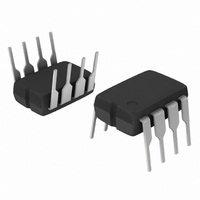LM2574N-015G ON Semiconductor, LM2574N-015G Datasheet - Page 18

LM2574N-015G
Manufacturer Part Number
LM2574N-015G
Description
IC REG SW 0.5A 15V OUTPUT 8-DIP
Manufacturer
ON Semiconductor
Type
Step-Down (Buck)r
Datasheet
1.LM2574N-3.3G.pdf
(26 pages)
Specifications of LM2574N-015G
Internal Switch(s)
Yes
Synchronous Rectifier
No
Number Of Outputs
1
Voltage - Output
15V
Current - Output
500mA
Frequency - Switching
52kHz
Voltage - Input
4.75 ~ 40 V
Operating Temperature
-40°C ~ 125°C
Mounting Type
Through Hole
Package / Case
8-DIP (0.300", 7.62mm)
Output Voltage
15 V
Output Current
0.5 A
Input Voltage
4.75 V to 40 V
Switching Frequency
52 KHz
Operating Temperature Range
- 40 C to + 125 C
Mounting Style
Through Hole
Duty Cycle (max)
98 %
Lead Free Status / RoHS Status
Lead free / RoHS Compliant
Power - Output
-
Lead Free Status / Rohs Status
Lead free / RoHS Compliant
Available stocks
Company
Part Number
Manufacturer
Quantity
Price
Company:
Part Number:
LM2574N-015G
Manufacturer:
ON Semiconductor
Quantity:
135
total package power dissipation for this switcher is quite
low, ranging from approximately 0.1 W up to 0.75 W under
varying conditions. In a carefully engineered printed circuit
board, the through−hole DIP package can easily dissipate up
to 0.75 W, even at ambient temperatures of 60°C, and still
keep the maximum junction temperature below 125°C.
Thermal Analysis and Design
the operating junction temperature. First determine:
1. P
2. T
3. T
4. R
5. R
(Refer to Absolute Maximum Ratings on page 2 of this data
sheet or R
total power dissipated by the LM2574:
where d is the duty cycle and for buck converter
LM2574 data sheet,
turn−off can be neglected if a proper type catch diode is used.
The junction temperature can be determined by the
following expression:
Unregulated
8.0 to 25 V
Since the current rating of the LM2574 is only 0.5 A, the
The following procedure must be performed to determine
The following formula is to calculate the approximate
I
V
V
I
DC Input
The dynamic switching losses during turn−on and
Q
Load
22 mF
in
Figure 27. Inverting Buck−Boost Develops −12 V
O
D(max)
A(max)
J(max)
qJC
qJA
C
(quiescent current) and V
is minimum input voltage applied,
is the regulator output voltage,
in
is the load current.
qJC
+V
in
5
− maximum regulator power dissipation in
− maximum ambient temperature in the
− maximum allowed junction temperature
− package thermal resistance junction−case.
− package thermal resistance junction−ambient.
P
and R
4
the application.
application.
(125°C for the LM2574). For a conservative
design, the maximum junction temperature
should not exceed 110°C to assure safe
operation. For every additional +10°C
temperature rise that the junction must
withstand, the estimated operating lifetime
of the component is halved.
D
(12)
= (V
Pwr
Gnd
(6)
LM2574−12
qJA
in
d +
2
x I
values).
Sig
Gnd
Q
(4)
t on
T
) + d x I
3
+
(14)
(3)
ON/OFF
V
V
sat
(5)
O
in
Load
1
Output
7
Feedback
,
can be found in the
x V
D1
MBR150
68 mH
sat
L1
−12 V @ 100 mA
Regulated
Output
LM2574, NCV2574
http://onsemi.com
C
680 mF
out
18
where (R
caused by the dissipated power and T
ambient temperature.
Some Aspects That can Influence Thermal Design
the junction temperature rise numbers are all approximate,
and there are many factors that will affect these numbers,
such as PC board size, shape, thickness, physical position,
location, board temperature, as well as whether the
surrounding air is moving or still. At higher power levels the
thermal resistance decreases due to the increased air current
activity.
area, copper thickness, single− or double−sided, multilayer
board, the amount of solder on the board or even color of the
traces.
board can also influence its effectiveness to dissipate the
heat. Some of them, like the catch diode or the inductor will
generate some additional heat.
ADDITIONAL APPLICATIONS
Inverting Regulator
is shown in Figure 27. This circuit converts a positive input
voltage to a negative output voltage with a common ground
by bootstrapping the regulators ground to the negative
output voltage. By grounding the feedback pin, the regulator
senses the inverted output voltage and regulates it.
output. The maximum input voltage in this case cannot
exceed 28 V because the maximum voltage appearing across
the regulator is the absolute sum of the input and output
voltages and this must be limited to a maximum of 40 V.
0.1 A to the output when the input voltage is 8.0 V or higher.
At lighter loads the minimum input voltage required drops
to approximately 4.7 V, because the buck−boost regulator
topology can produce an output voltage that, in its absolute
value, is either greater or less than the input voltage.
are higher than in the standard buck converter topology, the
available output current is lower.
require a larger amount of startup input current, even for
light loads. This may overload an input power source with
a current limit less than 0.6 A.
this inverting regulator topology, the use of a delayed startup
or an undervoltage lockout circuit is recommended.
capacitor can charge up to a higher voltage before the
switch−mode regulator begins to operate.
It should be noted that the package thermal resistance and
Other factors are trace width, total printed circuit copper
The size, quantity and spacing of other components on the
An inverting buck−boost regulator using the LM2574−12
In this example the LM2574−12 is used to generate a −12 V
This circuit configuration is able to deliver approximately
Since the switch currents in this buck−boost configuration
This type of buck−boost inverting regulator can also
Because of the relatively high startup currents required by
While using a delayed startup arrangement, the input
qJA
)(P
D
) represents the junction temperature rise
T
J
= (R
qJA
)(P
D
) + T
A
A
is the maximum













